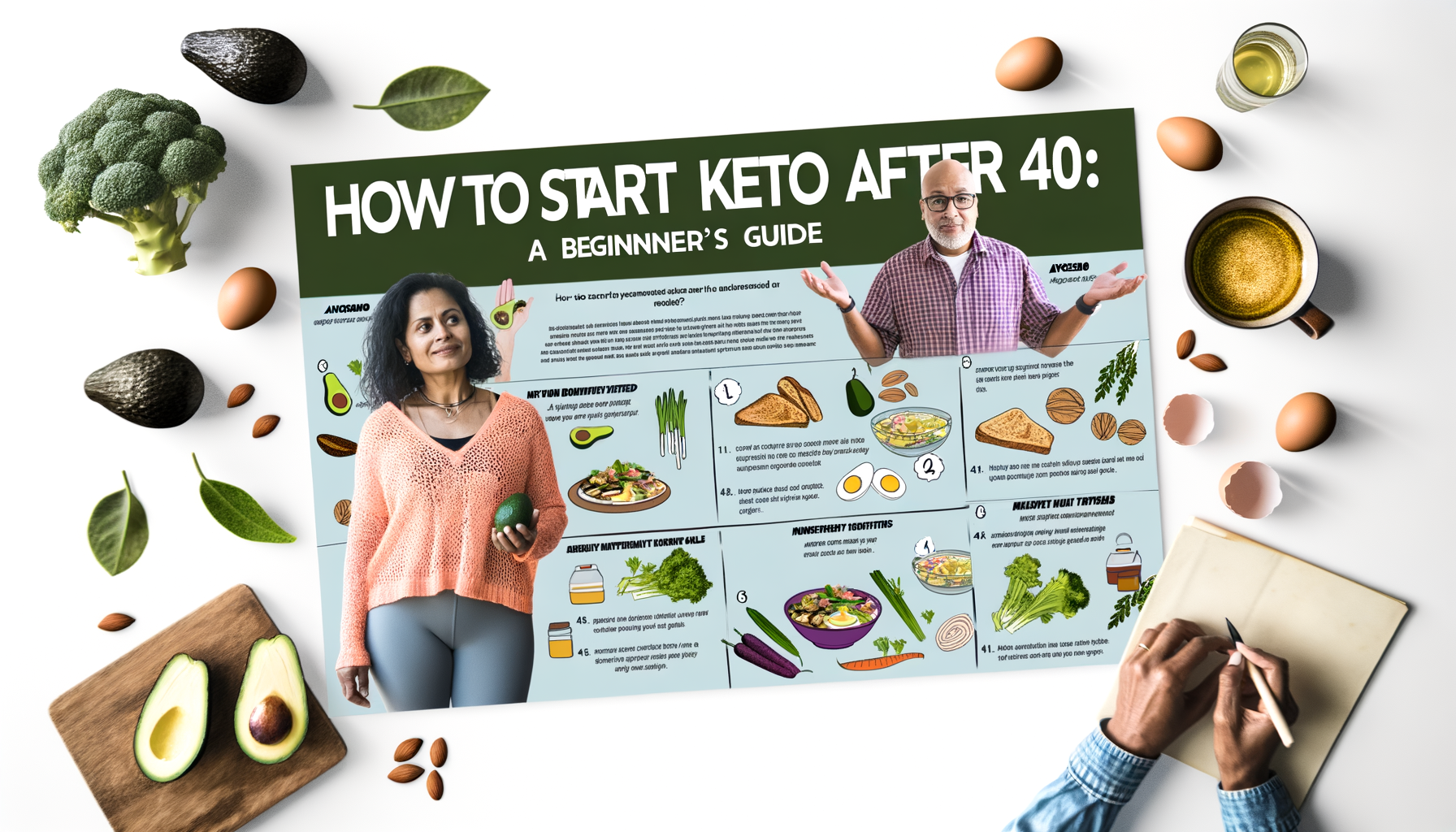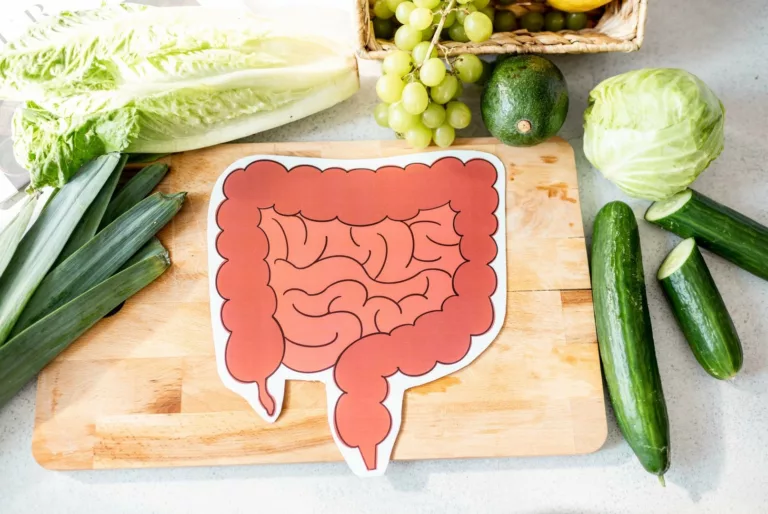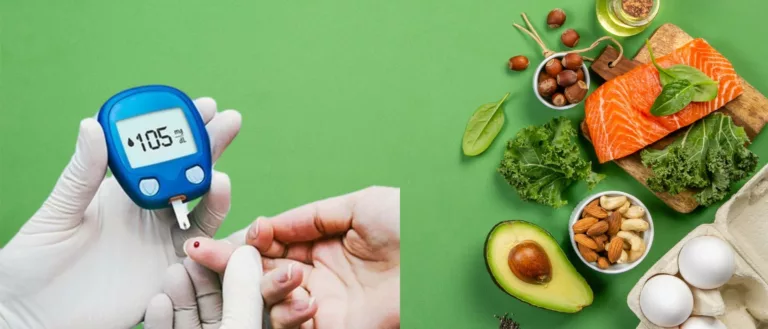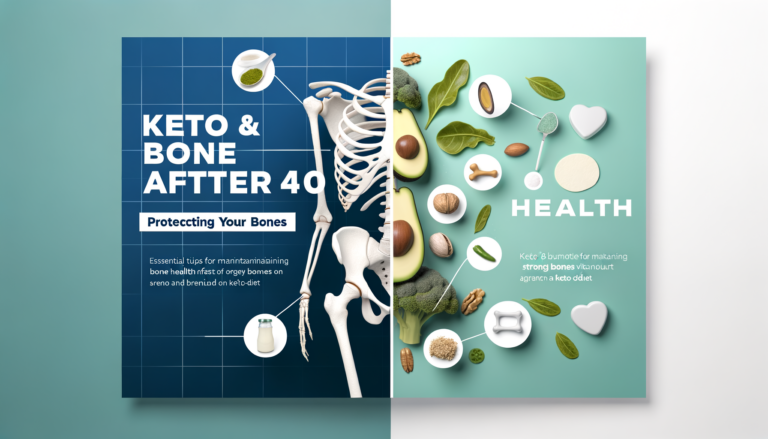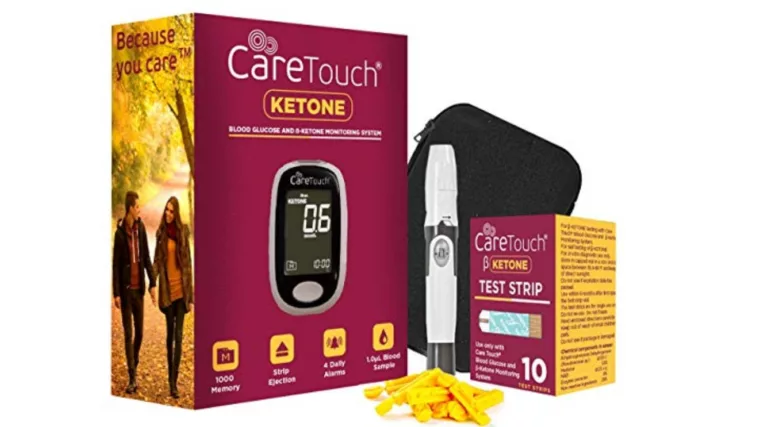Starting the keto diet after 40 can be a game changer for your health and well-being. As we age, our metabolism slows down, and it can become harder to maintain energy levels and manage weight. Keto, a low-carb, high-fat diet, helps shift your body into fat-burning mode, offering benefits like weight loss, improved mental clarity, and better overall health. In this beginner’s guide, we’ll walk you through everything you need to know on How to start keto after 40, including tips for success, potential challenges, and how to make the most of this lifestyle change.
What is the Keto diet?
The Keto diet is a high-fat, low-carbohydrate eating plan that encourages the body to burn fat for fuel instead of relying on glucose from carbohydrates. By drastically reducing carb intake and increasing fat consumption, the body enters a metabolic state known as ketosis. In ketosis, the liver produces molecules called ketones, which are used as energy in place of carbs. This shift in fuel source can lead to rapid weight loss and improved energy levels for many individuals on the Keto diet.
With its focus on fat and protein-rich foods like avocados, meats, and cheese, the Keto diet can be both satisfying and challenging for those accustomed to carb-heavy meals. It’s important to understand that the Keto diet is not just about cutting carbs—it also involves the mindful selection of nutrient-dense foods to ensure you are still meeting your body’s nutritional needs. While the initial adjustment period can be tough as your body adapts to using fat as its primary fuel source, many people find that the Keto diet can be a sustainable way to support weight loss and overall health goals.
Understanding the benefits of Keto for individuals over 40
For individuals over 40, the Keto diet can offer various benefits such as weight loss, improved energy levels, and better management of blood sugar levels. As we age, our metabolism tends to slow down, making it more challenging to maintain a healthy weight. The Keto diet’s focus on high-fat, moderate protein, and low-carb intake can help kickstart fat-burning and promote weight loss, which can be especially beneficial for those looking to shed excess pounds in their 40s and beyond. Moreover, by reducing carb intake and increasing fat consumption, the Keto diet can provide a steady source of energy that may help combat fatigue and boost overall vitality in older adults.
Additionally, for individuals over 40 who may be more prone to insulin resistance and fluctuations in blood sugar levels, the Keto diet’s ability to regulate and stabilize blood sugar levels can be particularly advantageous. By limiting the intake of carbohydrates that quickly convert to glucose in the bloodstream, the Keto diet can help prevent spikes and crashes in blood sugar, which can in turn reduce food cravings, promote satiety, and support better blood sugar control. This can be especially beneficial for older adults looking to manage conditions like prediabetes or type 2 diabetes, as well as those seeking to improve their overall metabolic health as they age.
Consulting with a healthcare provider before starting Keto
Before embarking on any new diet or lifestyle change, it is crucial to seek guidance from a healthcare provider. With the Keto diet gaining popularity, especially among individuals over 40, consulting with a healthcare professional becomes even more important. A healthcare provider can offer personalized advice based on your medical history, current health status, and individual needs.
Your healthcare provider can help you navigate any potential risks or challenges associated with the Keto diet, particularly if you have pre-existing health conditions. They can provide valuable insight into how the Keto diet may impact factors such as blood sugar levels, cholesterol, and overall well-being. By discussing your intentions to start the Keto diet with a healthcare provider, you can ensure that you are making informed decisions that align with your health goals.
Setting realistic goals for your Keto journey
When embarking on your Keto journey, it is crucial to establish realistic goals that align with your individual circumstances and objectives. Setting achievable targets can help you stay motivated and track your progress effectively. Whether your goal is weight loss, improved energy levels, or better overall health, breaking it down into smaller, manageable steps can make the process more attainable. By setting specific, measurable goals, such as aiming to lose a certain amount of weight per week or increasing your daily intake of healthy fats, you can set yourself up for success on the Keto diet. Remember that progress may vary from person to person, so it’s essential to focus on your journey and celebrate each milestone along the way.
It is important to recognize that sustainable changes take time, and results may not happen overnight. Be patient with yourself and avoid setting unrealistic expectations that could lead to frustration or disappointment. Instead of fixating on rapid weight loss or drastic transformations, consider setting goals that prioritize long-term health and well-being. By focusing on making gradual, sustainable changes to your lifestyle and habits, you can set yourself up for lasting success on the Keto diet. Trust the process, stay committed to your goals, and be open to adjusting them as needed based on your progress and feedback from your body.
Stocking your pantry with Keto-friendly foods
When embarking on a Keto journey, it is essential to stock your pantry with Keto-friendly foods that will support your goals. Key staples to have on hand include avocados, which are rich in healthy fats and versatile for a variety of dishes. Nuts and seeds like almonds, chia seeds, and flaxseeds provide a crunchy snack option packed with nutrients and fiber.
Additionally, oils such as olive oil, coconut oil, and avocado oil are ideal for cooking and dressing salads as they are high in good fats and low in carbohydrates. Coconut milk and almond milk can be great substitutes for dairy products, while nut butter like almond or peanut butter offers a satisfying way to curb cravings without compromising your Keto lifestyle. By stocking your pantry with these essentials, you can set yourself up for success in maintaining a well-rounded and satisfying Keto diet.
Meal planning and prepping for success on Keto
When following the Keto diet, meal planning and prepping are essential for staying on track and achieving success. By planning your meals in advance, you can ensure that you have the necessary ingredients on hand and avoid last-minute temptations to stray from your dietary goals. Begin by creating a weekly meal plan that includes a balance of proteins, healthy fats, and low-carb vegetables to keep you feeling satisfied and energized.
Prepping your meals ahead of time can save you valuable time during the week and help you resist the urge to reach for convenient but unhealthy options. Spend some time on weekends chopping vegetables, cooking proteins, and portioning out your meals so that they are ready to grab and go when you need them. Having pre-prepared meals on hand can make it easier to resist temptation and stay committed to your Keto lifestyle.
>>> Check this post about Keto on budget
Incorporating exercise into your Keto routine
To effectively incorporate exercise into your Keto routine, it is essential to choose activities that align with your fitness level and goals. Engaging in a combination of cardiovascular exercise, such as jogging or cycling, and strength training exercises like weightlifting or bodyweight workouts can help maximize the benefits of both the Keto diet and physical activity. It is recommended to aim for a balanced approach that includes a mix of aerobic and resistance training to support overall health and well-being.
In addition to regular exercise, staying consistent with your workouts and adjusting the intensity as needed can help optimize your Keto journey. Remember to listen to your body and give yourself adequate rest and recovery time between sessions to prevent injury and ensure long-term sustainability. By incorporating exercise into your daily routine and making it a priority, you can enhance the effectiveness of the Keto diet and achieve your health and fitness goals.
Staying hydrated on the Keto diet
Ensuring adequate hydration is crucial when following the Keto diet, as the body may excrete more water and electrolytes due to the reduction in carbohydrates. It is essential to drink plenty of water throughout the day to maintain proper hydration levels. Electrolytes such as sodium, potassium, and magnesium can also be lost on Keto, so incorporating foods rich in these minerals or using supplements is recommended to prevent dehydration and maintain electrolyte balance.
Dehydration can lead to fatigue, headaches, and muscle cramps, which can negatively impact your Keto journey. It’s essential to listen to your body’s thirst cues and not wait until you feel extremely thirsty before drinking water. Additionally, herbal teas, infused water, and electrolyte-enhanced beverages can provide variety in your hydration routine while supporting your overall health and well-being on the Keto diet.
Navigating social situations and dining out while on Keto
Being on the Keto diet doesn’t mean you have to avoid social situations or dining out entirely. With a bit of planning and strategizing, you can still enjoy meals with friends and family while staying true to your Keto goals. When dining out, look for protein-rich options like grilled meats or seafood, paired with non-starchy vegetables. Avoid dishes that are breaded, fried, or come with heavy sauces, as these can be high in carbs. Ask for dressings and sauces on the side so you can control the amount you consume. Additionally, don’t be afraid to customize your order to fit your Keto needs, most restaurants are willing to accommodate requests.
Social gatherings can sometimes be challenging when following a specific diet, but with a positive mindset, you can navigate them successfully. When attending parties or events, consider eating a small Keto-friendly snack beforehand to curb hunger and avoid temptation. If there aren’t many Keto-friendly options available, focus on foods like nuts, cheese, and vegetables with dips. Remember to stay hydrated and choose low-carb beverage options like water, unsweetened tea, or sparkling water. Lastly, don’t be shy about communicating your dietary preferences to your host or hostess, they may appreciate the heads up and be able to offer alternatives that fit your Keto lifestyle.

Tracking progress and making adjustments as needed
When following the Keto diet, it is important to track your progress to ensure you are on the right path towards your health goals. One effective way to track your progress is by keeping a food diary to monitor your daily intake of carbohydrates, fats, and proteins. This allows you to identify any patterns or areas for improvement in your diet, helping you make necessary adjustments as needed.
In addition to monitoring your food intake, tracking your physical activity levels can also play a key role in your Keto journey. By keeping a record of your exercise routines and progress, you can ensure that you are maintaining an active lifestyle to support your weight loss and overall well-being. This data can help you stay accountable and motivated, enabling you to make necessary adjustments to your workout regimen for optimal results
Key Takeaways (How to Start Keto After 40) :
- Keto after 40 can boost metabolism and aid weight management.
- Prioritize whole, nutrient-dense foods for sustainable results.
- Stay hydrated and ensure adequate electrolyte intake to avoid common side effects.
- Consult with a healthcare professional to tailor the keto approach to your specific needs and health goals.
- Patience is key—adjusting to keto takes time, but the long-term benefits are worth it.
By following these tips, you’ll be well on your way to reaping the rewards of the keto lifestyle after 40.
References :
– Mayo Clinic: Starting the Ketogenic Diet Safely

